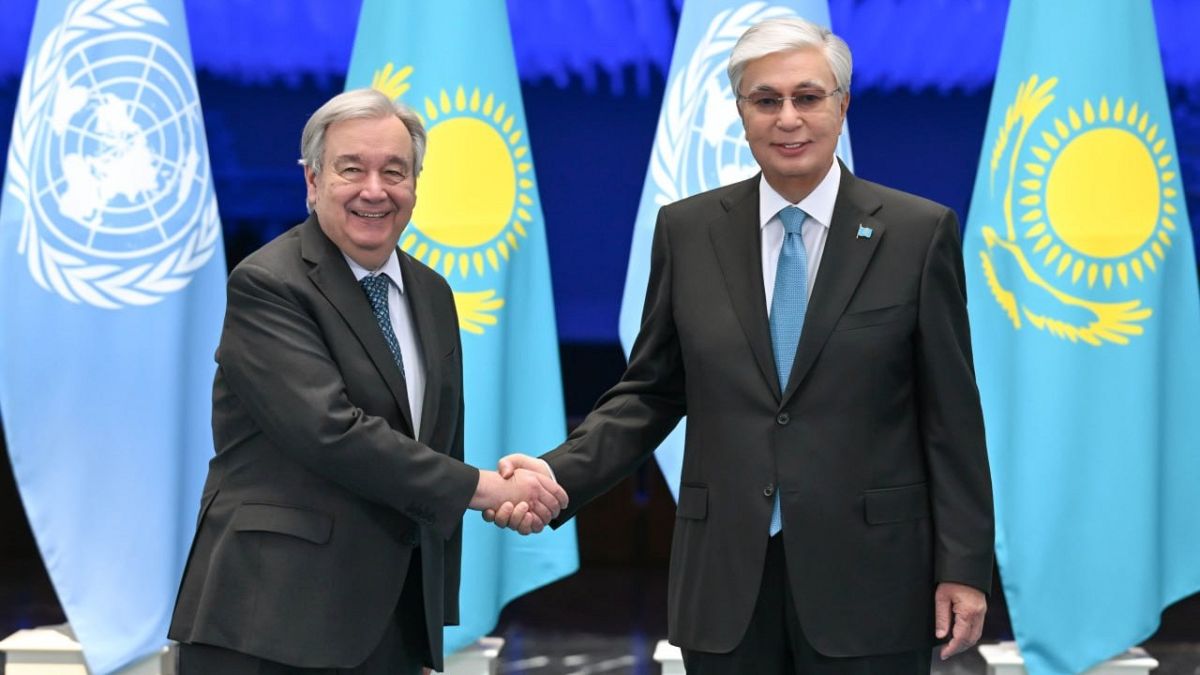

In a world increasingly shaped by the challenges of climate change and the pursuit of sustainable development, recent events underscore both the urgency and potential paths forward. From cooperative international efforts to environmental and humanitarian issues, this week presents a rich tapestry of challenges and initiatives that define our current global landscape.
One significant development comes from Central Asia, where the United Nations Secretary-General and Kazakhstan’s President inaugurated a regional center in Almaty dedicated to sustainable development. This center aims to bolster cooperation across Central Asia and support sustainable development initiatives in Afghanistan, signaling a commitment to fostering stability and economic growth in a region with complex geopolitical challenges. With an emphasis on regional collaboration, this hub aspires to be a model of how international entities can unite for the common good, providing resources and expertise essential for long-term progress.
Meanwhile, various parts of the world are grappling with intense climate extremes that pose immediate threats to human health and safety. Spain, for instance, has endured one of its harshest periods of heat-related fatalities, with reports confirming 1,060 deaths linked to July’s sweltering temperatures. As the nation contends with the ongoing heatwaves, the critical need for adaptive strategies to mitigate heat stress and protect vulnerable populations is abundantly clear.
In parallel, the province of A Coruña in Galicia, Spain, is witnessing fierce wildfires that have devastated extensive tracts of woodland. With at least 500 hectares already lost, the community’s resilience is being tested as firefighters and residents unite in a determined effort to contain the flames. This local challenge mirrors a global pattern, with Canada also experiencing rampant wildfires. Over 700 blazes are currently active across its provinces, triggering air quality alerts not only in Canada but also in parts of the United States, affecting cities like Detroit, Montreal, and Toronto. These circumstances highlight the intricate link between natural disasters and public health, emphasizing the importance of robust environmental policies and responsive emergency services.
Crossing continents to East Asia, Japan and South Korea have encountered record-breaking heat. Japan has seen its highest recorded temperatures, with Tamba reaching 41.2°C, surpassing previous national records. Almost a third of Japan’s meteorological stations reported temperatures exceeding 35°C, reflecting broader climatic shifts and the necessity for both immediate responses and long-term strategies to combat such unprecedented heat.
Concurrently, the United States faces its challenges with the Gifford fire in Central California’s Los Padres National Forest, which has ravaged 72,000 acres. This wildfire has not only threatened lives and homes—with hundreds of structures at risk and several injuries reported—but also shines a light on the essential role of evacuation preparedness and wildfire management in safeguarding communities.
Together, these diverse stories of climate extremes and developmental initiatives exemplify the interconnectedness of global challenges in our era. While some regions strive to progress towards sustainable development goals, others confront the harsh realities of a changing climate. Behind every data point and news headline lies a call to action—whether it’s in enhancing emergency responses, developing resilient infrastructures, or fostering international collaborations that transcend borders and bring shared solutions to common problems.
The road ahead requires collective effort and innovative thinking, as communities and nations navigate these complex, evolving landscapes. By drawing upon our shared resolve and ingenuity, we can aspire to craft a more sustainable and harmonious future for all.
Source: {link}
